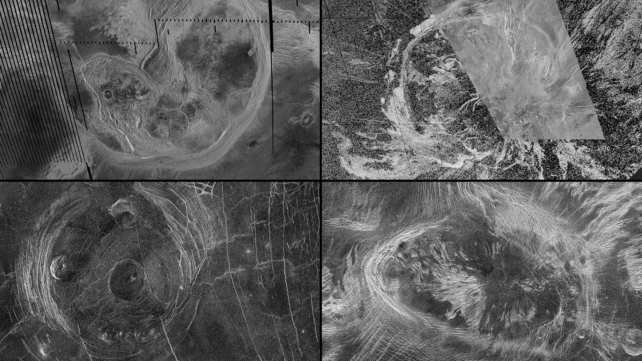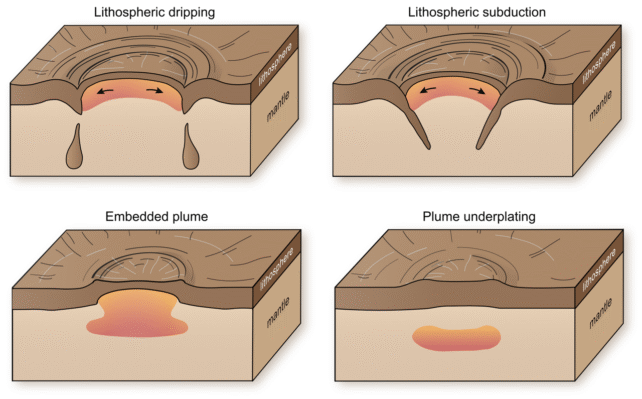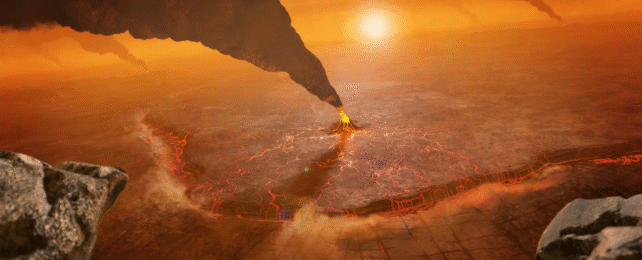A new study of Venus suggests that the deeply inhospitable world may be more like Earth than we thought.
A new delve into archival data collected decades ago suggests that the alien planet has ongoing tectonic-like processes that are deforming its surface and recycling its crust. If this is the case, then the large, round features on the Venusian surface called coronae may be the key that unlocks our understanding of the planet's interior processes.
"Coronae are not found on Earth today; however, they may have existed when our planet was young and before plate tectonics had been established," says planetary scientist Gael Cascioli of the University of Maryland and NASA's Goddard Space Flight Center.
"By combining gravity and topography data, this research has provided a new and important insight into the possible subsurface processes currently shaping the surface of Venus."

Venus doesn't have tectonic plates, like Earth does. Here on our home world, the fragmented plates into which the crust is divided generate a vibrant, active geology and surface features, allowing heat to escape, and recycling crustal material.
Even without tectonic plates, however, the Venusian surface is riddled with evidence of internal activity that pushes up from below and creates deformations. One such feature is the coronae. Coronae look a bit like impact craters, consisting of a raised ring, like a crown, surrounding a sunken middle, with concentric fractures radiating outwards. They can be hundreds of kilometers across.
Scientists initially thought these structures were craters, but closer analysis revealed that they're volcanic in nature. They're thought to be caused by plumes of hot molten material welling up from the planet's interior, pushing the surface upward into a dome that then collapses inward when the plume cools. The molten material then leaks out of the sides of the collapsed dome to form the ring.
Although Venus doesn't have tectonic plates, tectonic activity is thought to exist in the form of interactions between mantle plumes and the lithosphere. The researchers thought that these interactions could be occurring under the coronae.

They developed models to describe different scenarios for the formation of coronae by way of plumes. Then, they compared these models against gravity and topography observations collected by NASA's Magellan probe, which spent several years orbiting and studying Venus in the 1990s.
They used the topography data to identify 75 coronae, and the gravity data to understand what was going on underneath them. The team found that 52 of the coronae cap hot, buoyant plumes of molten material that are less dense than the surrounding material, likely driving tectonic processes.
There are two processes that occur here on Earth that could be taking place under coronae on Venus. The first is subduction. On Earth, that occurs when the edge of one tectonic plate gets slurped underneath the edge of the adjacent plate.
On Venus, it would look a bit different. As a plume pushes upwards, it forces the surface material to spread outwards and collide with other surface material, pushing some down into the mantle.

The other process is lithospheric dripping. As the underside of the lithosphere, or crust, is heated from below, it can start to melt itself, gradually forming oozy drips that are nevertheless cooler and denser than the molten material below, so they eventually break off and fall down into the planetary interior.
We don't know for sure, of course. Between its searing surface temperatures, crushing atmospheric pressure, and acid rain, Venus presents quite a few barriers to exploration. Nevertheless, coronae should, the scientists say, be a major focus for future investigation, not least because of the potential parallels with our own world.
"Coronae are abundant on Venus. They are very large features, and people have proposed different theories over the years as to how they formed," says planetary scientist Anna Gülcher of the University of Bern in Switzerland.
"The most exciting thing for our study is that we can now say there are most likely various and ongoing active processes driving their formation. We believe these same processes may have occurred early in Earth's history."
The research has been published in Science Advances.
